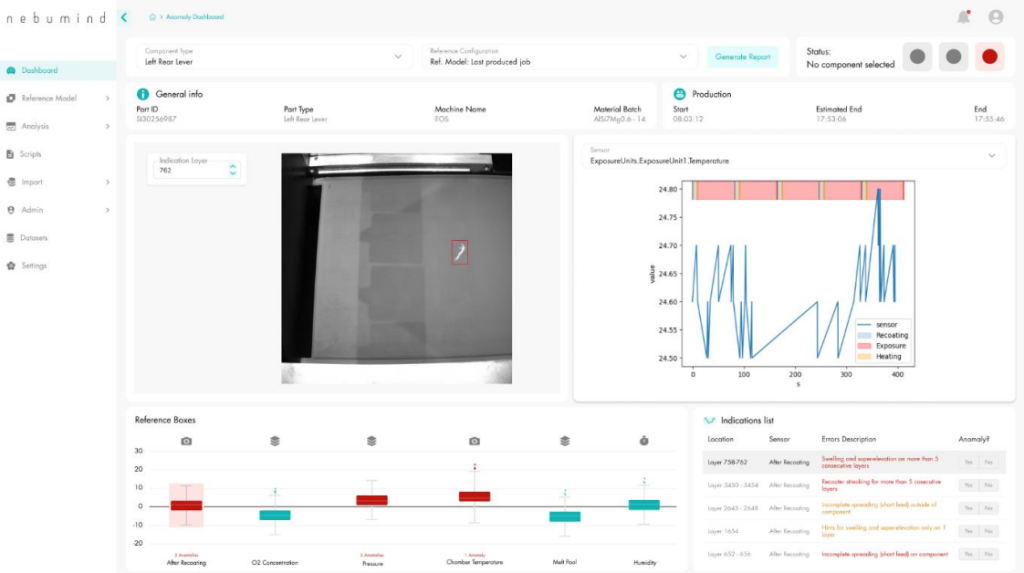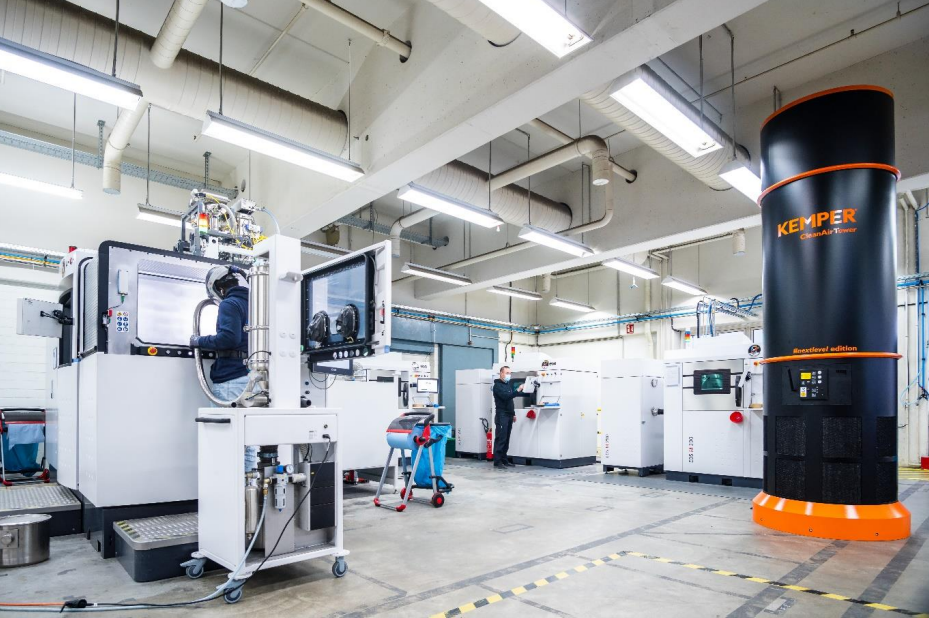Join the Expert Committee for the 2024 3D Printing Industry Awards to help select the winners!
German aerospace company Isar Aerospace has recently integrated the nebumind software into its laser powder bed fusion (LPBF) 3D printing process.
This integration is designed to automate the identification and reporting of defects during the application of new powder layers, to save time and costs in manufacturing. In the past, engineers manually assessed powder bed images to detect anomalies and evaluate their impact on component quality.
However, this process was found to be labor-intensive and time-consuming. With the implementation of the nebumind software, defects are now identified through automated analysis of powder bed images, providing engineers with essential information for evaluating printing process quality, says the company.

Automating defect detection in LPBF with multi-layer analysis
According to the company, LPBF involves a critical step of powder recoating after each layer is printed, which is prone to errors. Uneven or incomplete coating can lead to defects in components. Currently, sensors and cameras integrated into LPBF systems monitor the recoating step. However, manual analysis of these images for defects is still time-consuming and retrospective.
In response to this challenge, Isar Aerospace has linked the nebumind software to their machinery setup, streamlining defect detection for every recoating layer. Through the direct machine interface, the software automatically retrieves powder bed images captured by an optical camera with a resolution of 1280 x 1024 pixels, both before and after recoating. By employing algorithms predominantly centered on image and edge detection, nebumind identifies defects in the images, reducing false positives by scrutinizing defect positions across multiple layers.
The implementation of nebumind leads to substantial time savings, with potential reductions of up to 80% compared to the previous manual analysis. This allows engineers to concentrate on images flagged by the algorithm. Additionally, in the foreseeable future, nebumind’s defect recognition will transition to in-process analysis, facilitating the prompt detection of potential anomalies post-coating. This capability could potentially lead to halting the printing process in instances of irreparable defects.
Future plans entail integrating recoater defect data with other process metrics and CT scan results from final quality assessments to identify underlying causes and preemptively mitigate defects. Nebumind’s ultimate goal extends beyond mere process observation; it seeks to actively regulate operations. This could mean pausing printing in the face of irreparable errors or adjusting subsequent layers to compensate for inaccuracies in coating.

Defect detection software
Defect detection software in 3D printing ensures high-quality prints by identifying issues early, reducing material waste, and enhancing the reliability of printed parts for diverse applications, thus streamlining the printing process and optimizing efficiency.
In the past, Hexagon and Raytheon Technologies collaborated to create software that predicts and prevents metal 3D printing defects. As an extension of Hexagon’s Simufact Additive platform, this program offers users a streamlined interface for evaluating print outcomes without trial and error.
By leveraging MSC Software‘s MARC solver, it simulates builds, minimizes residual stresses, identifies failures, and optimizes post-processing. This innovation aims to enhance manufacturing efficiency and reduce time-to-market by empowering designers to assess print outcomes comprehensively, thereby minimizing defects and streamlining production processes.
Elsewhere, Chicago-based machine learning firm Printpal launched PrintWatch, an AI-driven defect detection software for FFF 3D printers, which monitors print jobs in real-time via a camera. Leveraging machine learning, it identifies defects as they form, enabling proactive intervention to prevent wasted time, filament, and hardware risks.
PrintWatch’s computer vision capabilities detect defects of various types, sizes, and materials, ensuring compatibility with any FFF printer. Its anomaly detection system identifies subtle machine issues without triggering false positives, enhancing maintenance planning for optimal printer performance.
What 3D printing trends do the industry leaders anticipate this year?
What does the Future of 3D printing hold for the next 10 years?
To stay up to date with the latest 3D printing news, don’t forget to subscribe to the 3D Printing Industry newsletter or follow us on Twitter, or like our page on Facebook.
While you’re here, why not subscribe to our Youtube channel? Featuring discussion, debriefs, video shorts, and webinar replays.
Featured image shows Isar Aerospace rocket launch. Photo via Isar Aerospace.



